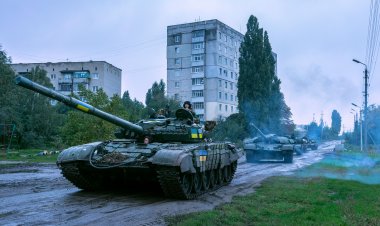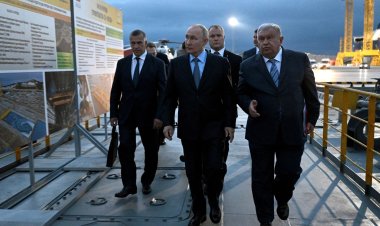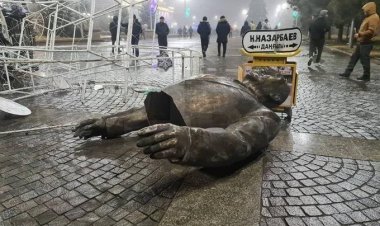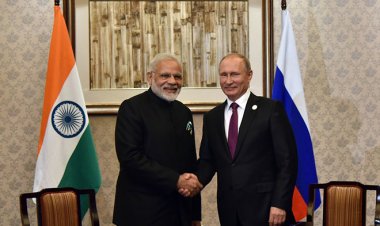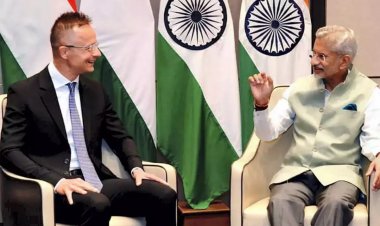Faultlines in the Russian War Effort
The article is a critical assessment of the Russian War effort thus far. The article analyses that how design drawbacks, logistical problems, issues with training and corruption are contributing to slowing down Russia from achieving its objectives with the war, and allowing the Ukrainian forces to inflict heavy damage on their soldiers and equipment.
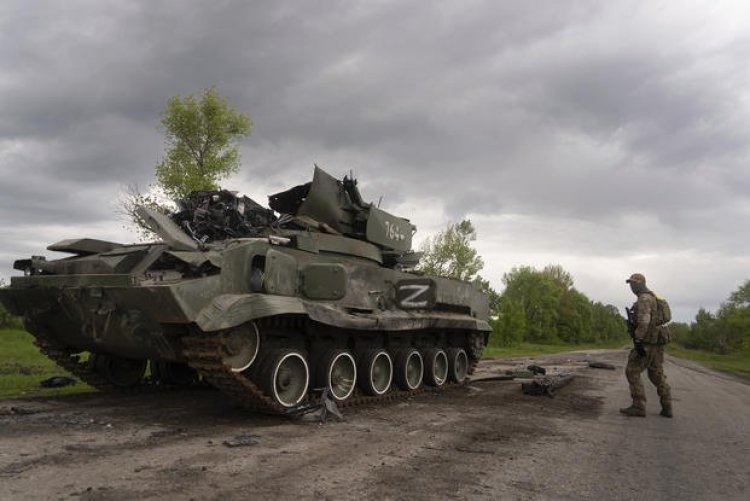
Analysis
By Peder Foss
Russia launched its military operation against Ukraine on February 24. This paper will discuss the progress of the war thus, with regards to the Russian war effort. The Russian attack commenced with air attacks against air bases, air defenses, command, and control centers. Other targets have been critical infrastructure and logistical hubs. The Russian air force has the means of conducting a full-scale air war against Ukraine. The major question throughout this war has been: where is the Russian air force? It began the war with attacking air bases, command structures, air defenses, and infrastructure. But it suddenly disappeared. It is still gone, so the Russians have not achieved air superiority. The Russian tried to deploy airborne units, which is rather brave to try to do without air superiority. Their attempt failed, as two IL-76 carrying about 200 paratroopers were shot down by the Ukrainian air defense.
Another major mistake by the Russian armed forces was not to assassinate or capture the political leadership of Ukraine. This was the Soviet Union’s strategy during their intervention in Afghanistan in 1979. It is harder to find leadership now than doing it in the early stages of a war or in the period called the gray zone. The time between war and peace. The Russians tried to assassinate the Ukrainian President but failed.
The ground attack occurred on a broad front, which was too broad as the different prongs of the attack could not support each other. The Russian made a similar mistake during the First World War. The attacks were not coordinated between artillery and mechanized/tank units, and there was no air support. All experienced soldiers know about road marches and road discipline. There was not much of any of these two during the first month of the war. Military vehicles need to have a space between them to reduce the casualties and the damage. The Russian military doctrine stipulates the use of artillery and attacking in waves, called echelons; these were also not seen much of. The Russian drove into urban areas as though they were on a road trip. They made the same mistakes during the Chechen wars and the war in Georgia.
The Russian tanks used in the war have a design flaw, since the T-64, the T-72, the T-80, and the T-90 are smaller than their Western counterparts, which mean they have less protection. They all have a three-man crew and an auto loader. The Ammunition to the main gun is in a carousel between the chassis and the turret. According to the design, the commander and the gunner would be sitting right above this carousel. If the tank is hit by an anti-tank round or an anti-tank missile, it ignites the ammunition, leading to the “the Jack in the Box” effect. The ammunition detonates, and the crew very seldom survive it. Moreover, the Russians have suffered a lot of tanks and other vehicle losses due to poor discipline and not coordinating between artillery, infantry, and tank units. The Ukrainians continue to receive the Javelin anti-tank missiles and the NLAW anti-tank missiles, which can hit on the top of the vehicle with a huge effect.
The Russian also ran into logistical problems quickly, which came as a surprise. Usually, the logistical problems during military operation emerge within four or five days. However, the Russians developed logistical issues almost immediately. Another thing that has hampered the Russian war effort is poor communications, due to relying on old equipment and cellphones. This can also explain why so many of the high-ranked officers have been killed, as civilian communication equipment or old radios can easily be traced and compromised by other means.
The modern war scenario requires good communications and coordination. It is almost impossible to be coordinated without secure communication. All incoming information must be shared by all units on the ground and in the air. Therefore, the need of very secure and good communication equipment. The Russian forces are lacking in this domain, and it is one of the main reasons why the war is being costly for them.
There is also a huge problem within the Russian command structure. It does not allow junior officers to be flexible and creative, which reduces the Russian ability to respond to a changing environment. War is chaos and the situation can change extremely fast, a strict command structure slows down the response to the change.
Another problem is within the Russian battalion tactical groups, which are trained to fight against the enemy's mechanized/tank units, and not against infantry with anti-tank weapons. It also seems the Russian army does not have enough of infantry to support the mechanized and tank units. An army needs the infantry to work alongside the mechanized forces. The Second World War is still a good reference, when the Americans, the British, the Germans, and the Soviets combined the infantry and the tanks. Tank and mechanized units without infantry are easy targets for the enemy's infantry and anti-tank units.
Over the course of the war, the Russian forces withdrew from Kiev and Kharkiv regions as their main objective changed from the broad offensive to focus on the Donbas region instead. The Russian has so far been quite successful in the Luhansk sector. The Ukrainian counteroffensive around Kharkiv has stalled, but if the Ukrainians continue with the offensive, Ukrainians can cut off the Russian forces north of Luhansk from its supply lines. The Russian offensive in the south has been more successful, but it has stalled. The capture of the city Mariupol was a success, but it took a very long time to conquer the city. The Ukrainians have been successful with destroying two ships, the amphibious supply ship and the cruiser Moscow, but both of them have a lesser significance for the war effort. But this can be the reason for why the Russians have not tried an amphibious assault against Odessa. The Ukrainian army is counterattacking in the south with the aim to recapture the city of Kherson. The war in the East of Ukraine is reminiscent of the First World War, but the Russian offensive seems to have stalled, probably due to supply problems after losing several of the munition depots in the Russian-controlled areas.
The Ukrainian war effort is hampered by being dependable on weapons arriving from the West. The Ukrainian army needs to be trained to use these new weapons and there is always the question if Ukraine gets enough weapons to force the Russians out of their territory. The HIMARS rocket system and the MLRS rocket systems provided by the United States and the United Kingdom are very effective in destroying Russian supply depots and other high-value targets. However, the Ukrainian forces need more than these two artillery systems to counterattack. The Ukrainian armed forces utilize the indirect approach instead of the direct approach. The military doctrine of the indirect approach was developed by the military historian and theorist Basil Liddell Hart. The theory is to hit the enemy where the enemy is weak and not where the enemy is strong. The theory of the indirect approach is influenced by some of the principles in the well-known work “The Art of War” by Sun Tzu.
The Russian army’s reputation for being corrupt is possibly one that may explain why the Russian military is finding it difficult to achieve their objectives. Corruption might explain why the Russians are not a well-trained military, as training costs money. If the money is used for something other than training the units, the units will not perform in a well-coordinated and effective manner. Moreover, the Russian administration is probably aware that their communication equipment is not on a military level and has tried solving it. Yet again, it appears as though the funding for it has ended up elsewhere. However, these are all speculations as it is difficult to prove if corruption is indeed adversely affecting the Russian war effort.
Thus we can see that design drawback, logistical problems, issues with training and corruption are contributing to slowing down Russia from achieving its objectives with the war and allowing the Ukrainian forces to inflict heavy damage on their soldiers and equipment.
Disclaimer: This paper is the author's individual scholastic contribution and does not necessarily reflect the organization's viewpoint.

